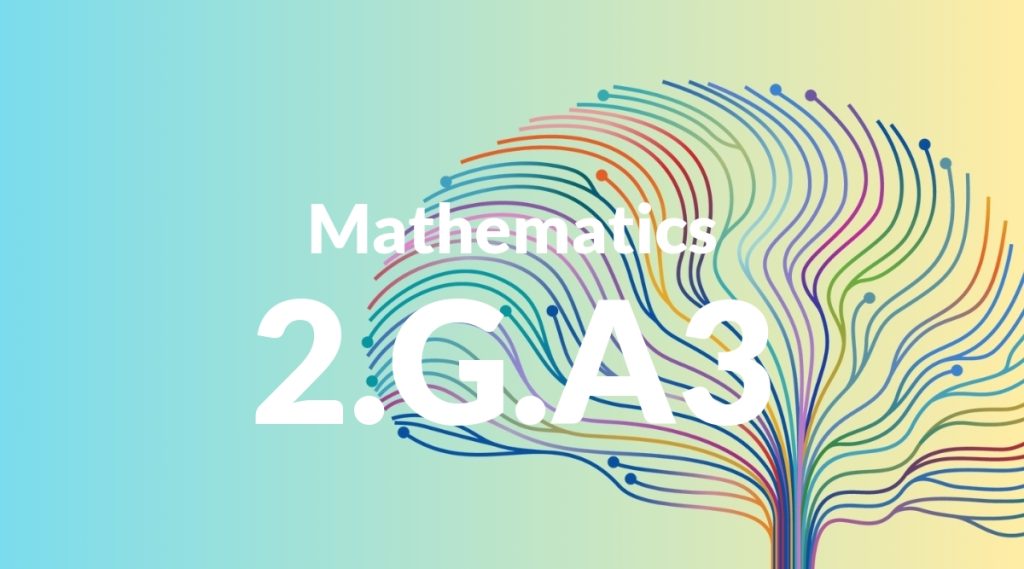Standard: 2.G.A3 – Partition circles and rectangles into two, three, or four equal shares, describe the shares using the words halves, thirds, half of, a third of, etc., and describe the whole as two halves, three thirds, four fourths. Recognize that equal shares of identical wholes need not have the same shape.
Grade level: Grade 2
Subject: Mathematics
Domain: Geometry
Teacher Overview
This standard focuses on helping students understand how to partition circles and rectangles into equal shares. It’s important because it builds foundational skills for understanding fractions, which are essential in higher mathematics. Students should be familiar with basic shapes and the concept of equal parts. They should also have some preliminary exposure to simple fractions.
After mastering this standard, students will be able to understand and work with more complex fractions, and apply this knowledge to real-world situations.
Common Misconception 1
Students might think that equal shares must always have the same shape. This is incorrect because equal shares can look different but still represent the same fraction of the whole.
Intervention 1
Use hands-on activities with manipulatives to show that different shapes can represent equal shares. For example, use different shaped pieces of paper to create equal parts of a circle or rectangle.
Common Misconception 2
Students may believe that larger shapes always mean larger shares, which is incorrect. The size of the share is determined by how the shape is divided.
Intervention 2
Use visual aids to show that the size of the share depends on the division, not just the size of the shape. For example, show that a larger rectangle divided into more parts can have smaller shares than a smaller rectangle divided into fewer parts.
Prerequisite Knowledge
Students should have a basic understanding of shapes such as circles and rectangles. They should also be familiar with simple fractions and the concept of equal parts.
Subsequent Knowledge
Students will develop a deeper understanding of fractions and their applications in real-world contexts. They will learn to identify and create more complex fractional parts and relationships.
Instructional Activities
- Use paper folding to create equal parts of circles and rectangles.
- Draw and color equal shares on paper shapes.
- Use fraction manipulatives to represent different ways to partition shapes.
- Create real-world scenarios where students need to divide objects into equal parts.
- Interactive games that involve partitioning shapes into equal shares.




